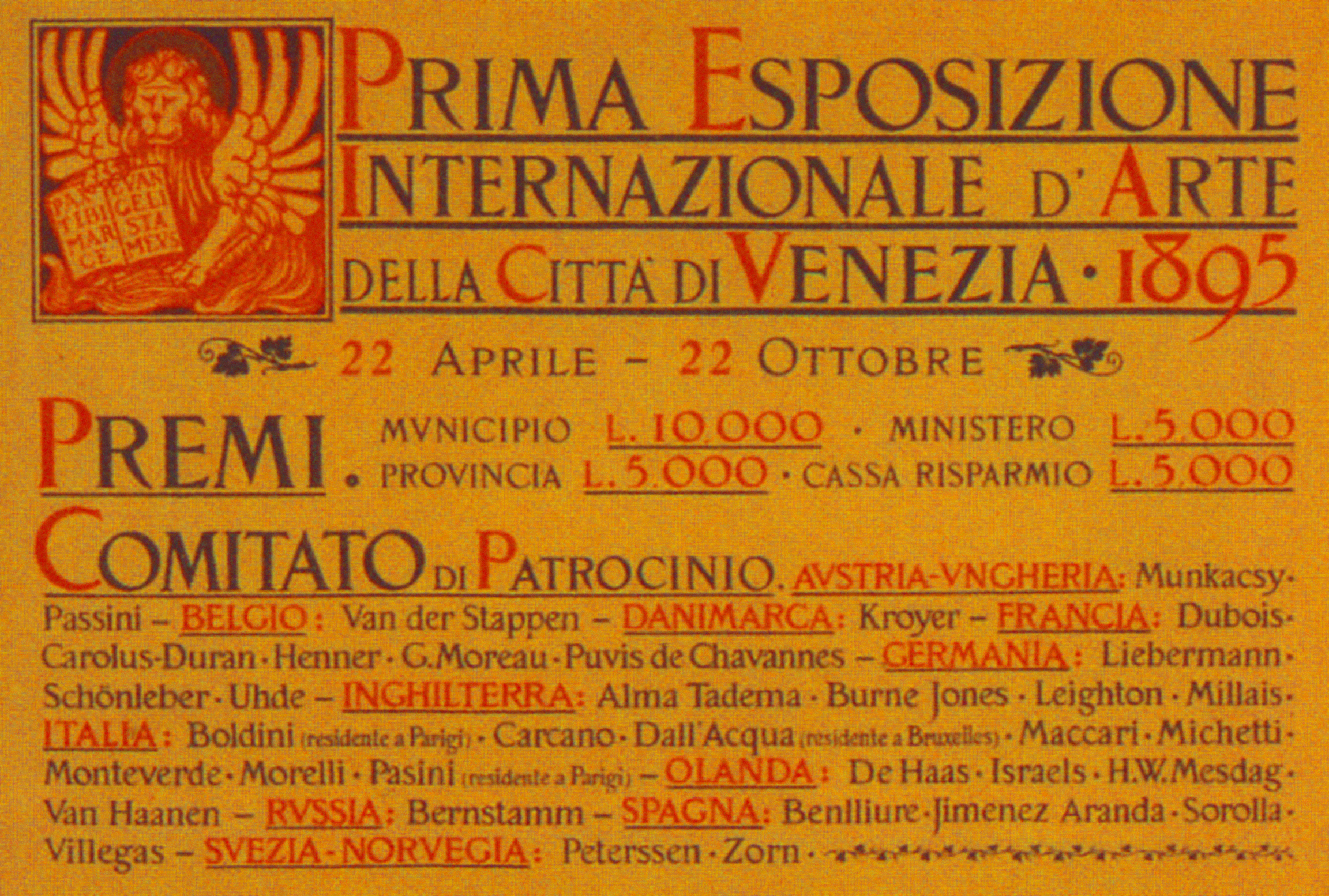|
┼Įeljko Kipke
┼Įeljko Kipke (born 3 March 1953) is a Croatian artist. His practice is based on painting and experimental film, but he is also a published art critic and theoretician. He was born in ─īakovec, Croatia, but lives and works in Zagreb. He was an associate in the Master Workshop of Ljubo Ivan─Źi─ć and Nikola Reiser (1976ŌĆō1980). From 1982 he started orienting himself towards theory and began to publish essays and critiques about visual art and experimental film in newspapers and magazines. During the 1980s he began creating experimental film and to date has made a series of six films entitled ''Six Easy Pieces'' along with the video art works: ''Rhythm'' (1980) and ''Embedding into a Black Square'' (1984). He participated in Harald SzeemannŌĆÖs exhibition ''Blood & Honey / FutureŌĆÖs in the Balkans'' in Klosterneuburg (Vienna) in 2003. He has exhibited in a group show in the ArtistsŌĆÖ Space in New York in 1989. His works are kept in many museum and gallery collections, including the ... [...More Info...] [...Related Items...] OR: [Wikipedia] [Google] [Baidu] [Amazon] |
Experimental Film
Experimental film or avant-garde cinema is a mode of filmmaking that does not apply standard cinematic conventions, instead adopting Non-narrative film, non-narrative forms or alternatives to traditional narratives or methods of working. Many experimental films, particularly early ones, relate to arts in other disciplines: painting, dance, literature and poetry, or arise from research and development of new technical resources. While some experimental films have been distributed through mainstream channels or even made within commercial studios, the vast majority have been produced on very low budgets with a minimal crew or a single person and are either self-financed or supported through small grants. Experimental filmmakers generally begin as amateurs, and some use experimental films as a springboard into commercial film-making or transition into academic positions. The aim of experimental filmmaking may be to render the personal vision of an artist, or to promote interest in ... [...More Info...] [...Related Items...] OR: [Wikipedia] [Google] [Baidu] [Amazon] |
─īakovec
─īakovec (; ; ; ) is a city in Northern Croatia, located around north of Zagreb, the Croatian capital, and close to the borders with Slovenia and Hungary. ─īakovec is both the county seat and the largest city of Me─æimurje County, the northernmost, smallest and most densely populated Counties of Croatia, Croatian county. It is situated centrally in the lowland part of the Me─æimurje (region), region, along the Trnava (Me─æimurje), Trnava river. History According to the geographer Strabo's reports in the 1st century, today's location of the city of ─īakovec was the site of Aquama (''wet town'') in Ancient Rome, Roman times and at the time a marshland, a military post and a legionnaire camp. One popular legend describes a green Slavic dragon#Pozoj, pozoj (dragon) once dwelling beneath the city and causing natural disasters such as hail and earthquakes, with its head under the castle and its tail under the church, or vice versa. It could only be gotten rid of by a ''grabancija┼ ... [...More Info...] [...Related Items...] OR: [Wikipedia] [Google] [Baidu] [Amazon] |
Croatia
Croatia, officially the Republic of Croatia, is a country in Central Europe, Central and Southeast Europe, on the coast of the Adriatic Sea. It borders Slovenia to the northwest, Hungary to the northeast, Serbia to the east, Bosnia and Herzegovina and Montenegro to the southeast, and shares a maritime border with Italy to the west. Its capital and largest city, Zagreb, forms one of the country's Administrative divisions of Croatia, primary subdivisions, with Counties of Croatia, twenty counties. Other major urban centers include Split, Croatia, Split, Rijeka and Osijek. The country spans , and has a population of nearly 3.9 million. The Croats arrived in modern-day Croatia, then part of Illyria, Roman Illyria, in the late 6th century. By the 7th century, they had organized the territory into Duchy of Croatia, two duchies. Croatia was first internationally recognized as independent on 7 June 879 during the reign of Duke Branimir of Croatia, Branimir. Tomislav of Croatia, Tomis ... [...More Info...] [...Related Items...] OR: [Wikipedia] [Google] [Baidu] [Amazon] |
Zagreb
Zagreb ( ) is the capital (political), capital and List of cities and towns in Croatia#List of cities and towns, largest city of Croatia. It is in the Northern Croatia, north of the country, along the Sava river, at the southern slopes of the Medvednica mountain. Zagreb stands near the international border between Croatia and Slovenia at an elevation of approximately above mean sea level, above sea level. At the 2021 census, the city itself had a population of 767,131, while the population of Zagreb metropolitan area is 1,086,528. The oldest settlement in the vicinity of the city was the Roman Andautonia, in today's ┼Ā─ćitarjevo. The historical record of the name "Zagreb" dates from 1134, in reference to the foundation of the settlement at Kaptol, Zagreb, Kaptol in 1094. Zagreb became a free royal city in 1242. In 1851, Janko Kamauf became Zagreb's List of mayors of Zagreb, first mayor. Zagreb has special status as a Administrative divisions of Croatia, Croatian administrative ... [...More Info...] [...Related Items...] OR: [Wikipedia] [Google] [Baidu] [Amazon] |
Nacional (weekly)
''Nacional'' is a Croatian weekly news magazine published in Zagreb. Founded in 1995 and owned by photographer and journalist Ivo Pukani─ć, ''Nacional'' quickly gained a reputation for reporting and critical articles about the conservative government led by the Croatian Democratic Union (HDZ), which was in power during the 1990s. During most of its existence its main rival was ''Globus (weekly), Globus'' published by Europapress Holding (EPH). History ''Nacional'' was launched in 1995 by Denis Kulji┼Ī, Ivo Pukani─ć and other prominent journalists dissatisfied with the editorial policies of then popular weekly ''Globus (weekly), Globus''. Soon a bitter competition developed between two magazines, because they tried to grab the same readership and used the same techniques of investigative journalism. In 2000 Pukani─ć stepped down as editor-in-chief to oversee the launch of his short-lived daily ''Republika'', which was meant to compete with EPH's ''Jutarnji list''. ''Republika'' w ... [...More Info...] [...Related Items...] OR: [Wikipedia] [Google] [Baidu] [Amazon] |
Harald Szeemann
Harald Szeemann (11 June 1933 ŌĆō 18 February 2005) was a Swiss curator, artist, and art history, art historian. Having curated more than 200 exhibitions, many of which have been characterized as groundbreaking, Szeemann is said to have helped redefine the role of an art curator. It is believed that Szeemann elevated curating to a legitimate art form itself.Birnbaum, Daniel. WHEN ATTITUDE BECOMES FORM. 43 Vol. New York: Artforum Inc, 2005. Personal life Szeemann was born in Bern, Switzerland on June 11, 1933.M├╝ller, Hans-Joachim. Harald Szeemann: Exhibition Maker. Ostfildern-Ruit: Hatje Cantz, 2006. 10-11 He studied art history, archaeology and journalism in Bern and at the Sorbonne University, Sorbonne in Paris from 1953ŌĆō60, and in 1956 to 1958 he began working as an actor, stage designer and painter, and produced many one-man shows. In 1958 he was married to Francoise Bonnefoy and in 1959 their son Jerome Patrice was born. In 1964 his daughter Valerie Claude was born. He wa ... [...More Info...] [...Related Items...] OR: [Wikipedia] [Google] [Baidu] [Amazon] |
MUMOK
Mumok (from the full name ; "Museum of modern art, Ludwig Foundation, Vienna") is a museum in the Museumsquartier in Vienna, Austria. The museum has a collection of 10,000 modern and contemporary art works, including major works from Andy Warhol, Pablo Picasso, Joseph Beuys, Nam June Paik, Wolf Vostell, Gerhard Richter, Jasper Johns and Roy Lichtenstein. Over 230 art works were given to the museum by the German industrialist and art collector and his wife Irene in 1981. Since 2001, the museum has been housed in a stone-clad building designed by Austrian architects Ortner & Ortner. The Mumok regularly organizes special exhibitions and is known for its large collection of art related to Viennese Actionism. History The mumok, Museum moderner Kunst Stiftung Ludwig Wien, was founded on September 21, 1962, as the Museum of the Twentieth Century (later the 20s House) in the Swiss Garden, located in the Austrian Pavilion that had been built by Karl Schwanzer for Expo 58 in Brusse ... [...More Info...] [...Related Items...] OR: [Wikipedia] [Google] [Baidu] [Amazon] |
Venice Biennale
The Venice Biennale ( ; ) is an international cultural exhibition hosted annually in Venice, Italy. There are two main components of the festival, known as the Art Biennale () and the Venice Biennale of Architecture, Architecture Biennale (), which are held in alternating years (hence the name). There are also four additional components, each usually held on an annual basis, comprising , , Venice Film Festival, and Venice Dance Biennale. Between them they cover contemporary art, architecture, music, theatre, film, and contemporary dance. The main exhibition is held in Castello, Venice, Castello and has around 30 permanent pavilions built by different countries. The Biennale has been organised every year since 1895, which makes it the oldest of its kind. Since 2021, the Art Biennale has taken place in even years and the Architecture Biennale in odd years. History 1895ŌĆō1947 On 19 April 1893, the Venetian City Council passed a resolution to set up an biennial exhibition of I ... [...More Info...] [...Related Items...] OR: [Wikipedia] [Google] [Baidu] [Amazon] |
People From ─īakovec
The term "the people" refers to the public or common mass of people of a polity. As such it is a concept of human rights law, international law as well as constitutional law, particularly used for claims of popular sovereignty. In contrast, a people is any plurality of persons considered as a whole. Used in politics and law, the term "a people" refers to the collective or community of an ethnic group or nation. Concepts Legal Chapter One, Article One of the Charter of the United Nations states that "peoples" have the right to self-determination. Though the mere status as peoples and the right to self-determination, as for example in the case of Indigenous peoples (''peoples'', as in all groups of indigenous people, not merely all indigenous persons as in ''indigenous people''), does not automatically provide for independent sovereignty and therefore secession. Indeed, judge Ivor Jennings identified the inherent problems in the right of "peoples" to self-determination, as i ... [...More Info...] [...Related Items...] OR: [Wikipedia] [Google] [Baidu] [Amazon] |
1953 Births
Events January * January 6 – The Asian Socialist Conference opens in Rangoon, Burma. * January 12 – Estonian ├®migr├®s found a government-in-exile in Oslo. * January 14 ** Marshal Josip Broz Tito is chosen President of Yugoslavia. ** The CIA-sponsored Robertson Panel first meets to discuss the UFO phenomenon. * January 15 ** Georg Dertinger, foreign minister of East Germany, is arrested for spying. ** British security forces in West Germany arrest 7 members of the Naumann Circle, a clandestine Neo-Nazi organization. * January 19 – 71.1% of all television sets in the United States are tuned into '' I Love Lucy'', to watch Lucy give birth to Little Ricky, which is more people than those who tune into Dwight Eisenhower's inauguration the next day. This record is never broken. * January 24 ** Mau Mau Uprising: Rebels in Kenya kill the Ruck family (father, mother, and six-year-old son). ** Leader of East Germany Walter Ulbricht announces that ... [...More Info...] [...Related Items...] OR: [Wikipedia] [Google] [Baidu] [Amazon] |
Croatian Male Painters
Croatian may refer to: *Croatia *Croatian language *Croatian people *Croatians (demonym) See also * * * Croatan (other) * Croatia (other) * Croatoan (other) * Hrvatski (other) * Hrvatsko (other) * Serbo-Croatian (other) Serbo-Croatian, Croato-Serbian, Serbo-Croat or Croato-Serb, refers to a South Slavic language that is the primary language of Serbia, Croatia, Bosnia and Herzegovina, and Montenegro, as well as a minority language in Kosovo Kosovo, officiall ... {{disambiguation Language and nationality disambiguation pages ... [...More Info...] [...Related Items...] OR: [Wikipedia] [Google] [Baidu] [Amazon] |






